Posted by Jay on November 11th, 2007
Over the course of the last year I have made a number of cut wood letters. I have done so in order to gain process experience and to find the right combination of typefaces, dimensions and treatments in search of a decent question and answer linkage.
Watch a presidential debate and see the tangled relationships between the moderator’s questions and the varied kinds of responses. Messy and devious as it may become at times, the question and answer relationship is a fundamental aspect of the intellectual process. As such it calls out for plastic representation.
The final solution will likely be a tangled mass of big block letters. In the meanwhile I’ll settle for an equally tangled mass of this last year’s experiments.
These are three photos of one piece.
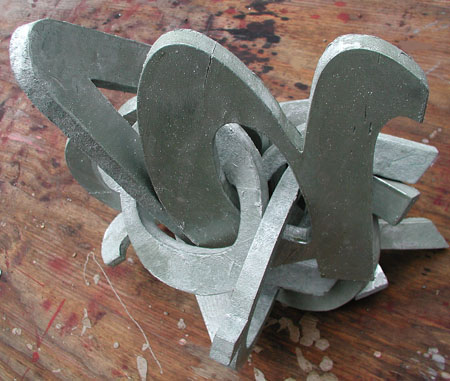
I’m still looking for the right colors. Early on I was giving each letter its own hues and patterns. This raised the visual density, but detracted from any clarity of intention. When undecided, I usually fall back to aluminum paint.
more… »
Filed in Uncategorized
- Comments closed
Posted by June Underwood on November 9th, 2007
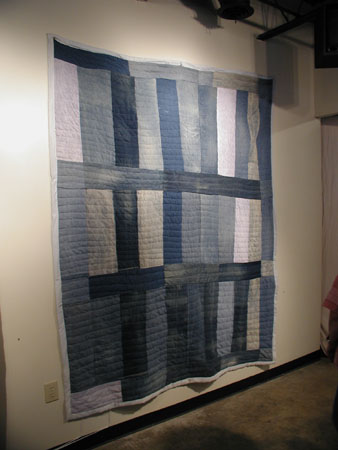
I’ve been following, if not commenting on, the discussions on blogs and their usefulness to a community of artists. And that led me to thinking about communities of artists.
All kinds of communities of artists have existed — ateliers of the Renaissance, –the academies of art — museum schools where students sat on the floor drawing ancient scuptures– the artists who rebelled against the academy in Paris– the Group of Seven took on Emily Carr in the late 1920’s — the New York School whose members drank together at bars, married, divorced, remarried each other– well you get the idea — art camps, colonies, ateliers, workshops, studio spaces, hanging with artists — all comprise community. And now we have the internet, adding another element to the possibility of community.
One of the most fascinating communities of artists is that of the black women of Gee’s Bend, Alabama, whose quilted art was exhibited in Houston and then at the Whitney in 2002. [Michael] Kimmelman in the New York Times November 29, 2002 regarded the exhibit as
“..Some of the most miraculous works of modern art America has produced. Imagine Matisse and Klee (if you think I’m wildly exaggerating, see the show) arising not from rarefied Europe, but from the caramel soil of the rural South in the form of women, descendants of slaves when Gee’s Bend was a plantation. These women, closely bound by family and custom (many Benders bear the slaveowner’s name, Pettway), spent their precious spare time — while not rearing children, chopping wood, hauling water and plowing fields — splicing scraps of old cloth to make robust objects of amazingly refined, eccentric abstract designs. The best of these designs, unusually minimalist and spare, are so eye-poppingly gorgeous that it’s hard to know how to begin to account for them. But then, good art can never be fully accounted for, just described.” (as quoted on the website of Shelly Zegart) more… »
Filed in abstraction,across the arts,being an artist,Uncategorized
- Comments closed
Posted by Sunil Gangadharan on November 8th, 2007
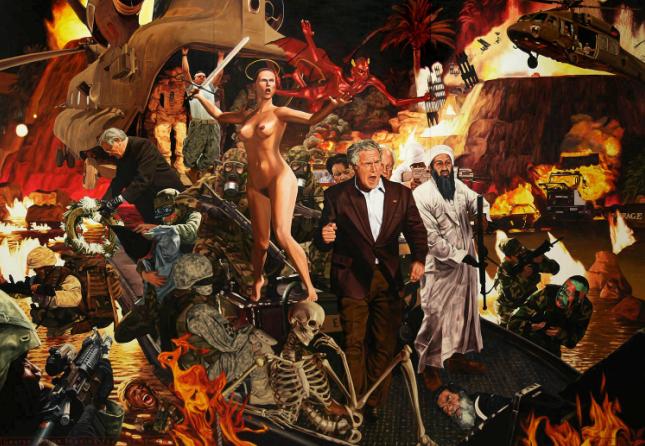
Jeffrey Isaac, ‘George W. Bush leading the war of terror’, 2007, oil on canvas, 250 x 360 cm.
I have been following Jeffrey Isaac‘s paintings for some time now (about a year actually) and a little while back (in an effort to understand some of his works), I had an e-mail conversation on motivations behind his art, his style of oil painting, his choice of subjects and his views on art. The conversations led to the following dialogue (you may call it an interview), presented here.
Some of this is stoked by a particular interest I have had in hearing social commentary from US artists who live outside the States and Jeffrey is an example of such an artist. Sometimes the commentaries developed are richer due to a melding of cultures and as a result their art tends to reflect inherent local perceptions to global social issues. more… »
Filed in Uncategorized
- Comments closed
Posted by Jay on November 7th, 2007
Birgit has asked to see the original. here it is.
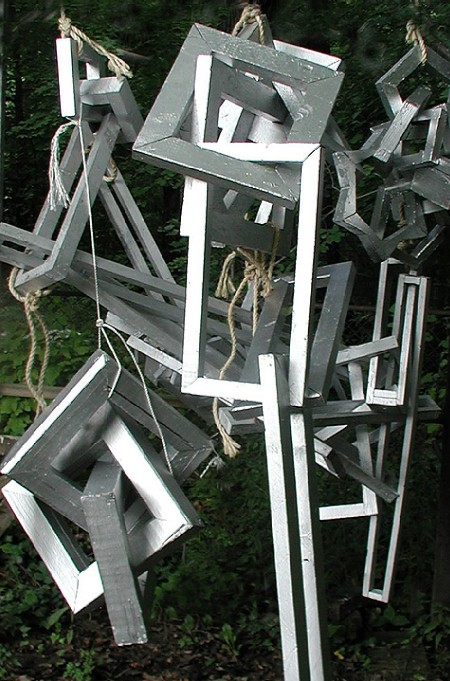
As pointed out elsewhere, this is a bunch of stuff hung up and in a sort of storage. The image in Cubey Do The First dispenses with the foliage.
Filed in Uncategorized
- Comments closed
Posted by Jay on November 6th, 2007
In preparation for winter I painted a number of odd links in aluminum and hung them up.
In my lily pad post, and the waterfall one with Steve, I employed a stamping technique found in Photoshop. The process allows one to transfer bits and pieces between and around images. In this instance I chose a shot of the odd links and gave it the treatment. It ended up quite fractured and a bit Analytical.
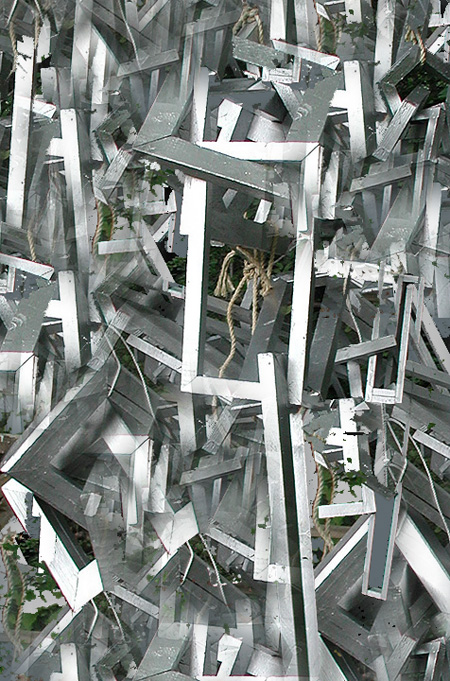
I would so dearly love to get a like result in real life.
We might discuss the difference between what might and what can be.
Filed in Uncategorized
- Comments closed
Posted by Steve Durbin on November 6th, 2007
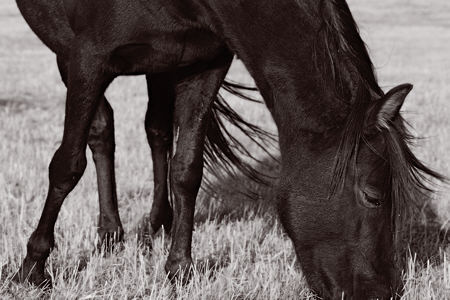
It should be no surprise that in Montana, even in Bozeman, there’s no shortage of artists painting, drawing, sculpting and photographing horses. Which is a delight for me, engaged as I am in such a project myself (posts here and here). That gives me a keen interest in how others have responded to the subject, and enhances my appreciation of their work.
So it’s shocking to me that, before yesterday, I hadn’t thought for a long time about Deborah Butterfield. Two years ago I first saw her horse sculptures at the Yellowstone Art Museum; they had the force of revelation. I remember walking into the room and having to sit down (on a fortunately placed bench) to gaze at the horse there, one of her newer ones in patina’d bronze cast from driftwood. Without any knowledge of Butterfield, her technique, or the subject, my overwhelming impression was that this was a person who understood horses. What they are inside, and how they are put together, in both a physical and a metaphorical way.
more… »
Filed in photography,work in progress
- Tags: horses
- Comments closed
Posted by Birgit Zipser on November 6th, 2007
Art blogging has gotten a lot of attention recently. Please chime in with your perspectives, comments, gripes, etc.
Here, I am comparing some of Steve’s responses yesterday here on A&P to Arthur’s responses on ‘Thinking eye’.
My summary (hopefully, lacking misinterpretation) may serves as an illustration of the different virtues of (1) a team blog and (2) a blog of one individual.
more… »
Filed in blogging
- Comments closed




